This blog has been updated to reflect new science regarding subwoofer acoustic treatment, this update occurred on 12/2/19.
Today we’re going to talk about subwoofer acoustic treatment and how you can use it to manage the power of your subwoofers. Just like anything else in acoustics, rooms and speakers interact. We have our room, we have our electronics and there are lots of variables to consider and don’t be misled by manufactures claims that we’re the biggest and the best because it’s all relative to your room. There is no such thing as big, better, best when it comes to room acoustics because the room’s going to change the sound of your subwoofer speaker anyway so we have to please the room and make it happy.
1. Subwoofer Usage: You have to consider the usage before buying the sub. So what are you using the sub for? Is it two-channel? Is it seven to ten channels like in-home theater? Are you using multiple subs? The more energy-producing devices you use especially low-frequency energy generating devices, the more room volume you need to hold or contain that energy from your acoustic subwoofer.
a. Two Channel Setup: What are you looking for in a two-channel subwoofer? Speed and definition to match the front and with two channels you want to integrate smoothly with the two-channel so that you don’t localize it and really hear where it is. Usually, the subwoofer and the speakers are made by different manufacturers, so the goal here is to find one that’s as fast or as slow as your left and right channels are. Getting the speed of that additional speaker to coordinate with the speed of the other front channels, the left, and the right channel, is a critical factor.
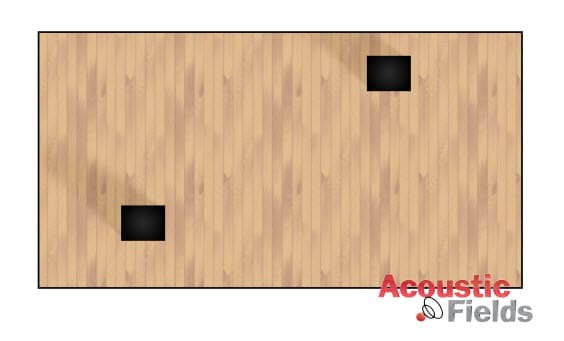
Subwoofer Placement for 2 Subs
b. Home Theater Subwoofer Setup: What do we want with home theater? We want energy, we want amplitude, we want lots of ability to go low and produce lots of energy. Long-throw drivers whereas in two-channel our subwoofers have a shorter throw thus getting more definition. With numerous subwoofers comes the correct positions of each low-frequency source. Each subwoofer must be positioned in the room size and volume ina position that does not have a negative impact on the room’s frequency response. We want to minimize the spatial irregularities in the room response and subwoofers are a large factor in that decision.
2. Match Sub Driver to Room: Let’s look at an example here. The difference between a ten-inch and a twelve-inch sub can be plus or minus two to three dB which means more energy for the room. Well, plus or minus two or three dB may not sound like a lot of energy but when its low frequency, it’s a huge amount and that can really exasperate the problems that you’re having in the room already and make things much worse. It also makes things intolerable so we have to either not have a sub in the room or move and get a new room.
3. Room Size is Critical for Correct Subwoofer Acoustic Treatment
What’s a good room size for a home theater? My answer is always anything less than thirty feet in any one dimension is problematic. Well, that’s from an acoustic standpoint the half wavelength of twenty cycles is thirty feet.
So we want at least the half-wavelength run in one dimension. How many of you out there have a room that’s thirty feet in one dimension? Most of you don’t. But you have to realize that’s kind of the benchmark that we use, so any footage less than that is always going to be a problem. Now how do we manage those issues? Well, we can as long as we watch our sizes. If we start getting down into the fifteenth foot distances in width and stuff like that, fourteen, thirteen, that’s about your breakpoint right there. When you start getting less than thirteen, i.e. twelve, it’s just not realistic and it’s time to look for a new room.
So depending on what you’re trying to do with our subwoofers you’ve got to consider the sub usage in the room. You want to know what kind of system it’s going to be in the room. Definitely match the diameter of the low-frequency drivers to the room. Don’t put twenty-four-inch drivers in rooms that have three-thousand cubic feet of volume, there’s a relationship there between volume and dimensions that you have to consider. With room size, the ideal dimension is thirty feet. Anything less than thirty feet is problematic.
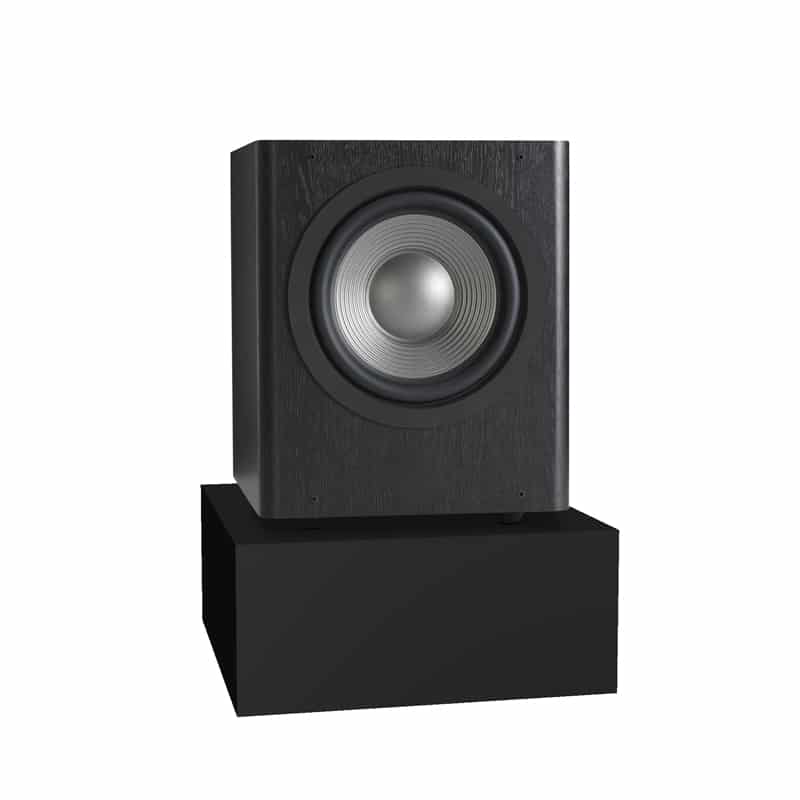
Subwoofer Absorber Platform
Subwoofer platform: https://www.acousticfields.com/product/subwoofer-platform-absorber/
4. Subwoofer Acoustic Treatment:
There’s a lot of confusion in the literature today. Foams and boxes filled with building insulation are not low-frequency absorbers. They’re middle and high-frequency absorbers and they should be used for that purpose only. They’re not low-frequency energy devices unless the box filled with building insulation is very thick and deep. Six to seven feet in some cases so not very realistic, and foams obviously are just not designed at all for low-frequency absorption. Don’t let companies tell you that because it’s insulting when you understand the physics behind it and I’m amazed that they even say things like that. Stay away from such terms as an acoustic subwoofer and subwoofer vibration absorber.
You’ve got to use the right acoustic treatment when you’re managing subwoofers. It’s a pressure-activated form of treatment that you must use because subwoofers produce low-frequency pressure. They are very low frequency producing devices, in most of our systems they cross over at fifty cycles, sixty cycles, seventy cycles which the pre-amp then sends all that energy at that crossover point to the subwoofer. You determine electronically where it crosses over at. So these are all low frequency activated pressure areas and you need a pressure-activated absorber to treat those within your room and positioning is also critical.
We Recommend Diaphragmatic Absorbers
Diaphragmatic, Membrane, and Helmholtz are the only three technologies you should be thinking about for this task. Diaphragmatic absorption is the one that is most useful for it because that’s where our technology platforms are based upon. The front wall, internal cabinet fill, and cabinet. Energy is slowed by the front wall as it enters the internal cabinet and is reduced even more by the structure of the cabinet which is vibrationally specific to that absorber. And this video I made explains this process in greater detail.
Diaphragmatic Absorbers: https://www.acousticfields.com/product-category/sound-absorption/acda-series/
Another method to treat the excess energy of subwoofers is to use our carbon-based subwoofer platforms. They do three critical things. They elevate, isolate, and attenuate excess energy before it gets into the room. Elevating the subwoofer smooths out the room response, Isolating any vibration producing source from the surface area it contacts is always welcome and attenuation or absorption as close to the source as possible is welcome before the energy gets out into the room and is impacted by room distortion.
Membrane
With membrane its the same principle. Internal fill material with front wall and cabinet. With a membrane absorber, the cabinet is less dense and it’s a single front wall and it’s usually a membrane of vinyl or rubber, something more flexible to move a little bit. It does achieve some low levels of absorption sometimes but not very high rates so you don’t get a lot. You get a low level but not necessarily a lot of it so you have to use a lot of this treatment. With any low-frequency absorption technology, we must go low and get a lot because we only have so much space in our rooms and must utilize that space as best as we can.
Helmholtz
Helmholtz obviously is the one that’s with the slot in the chamber and all that has to be calculated as well as the position in the room has to be calculated as its more frequency-specific. They are difficult to design and are narrow in the frequency band they cover. You will need many units and if space in your room is at a premium, you must absorb as much energy per square foot as you can.
Diaphragmatic
Of the three main low-frequency absorption technologies diaphragmatic is the platform that you can really dial in and get a large amount of absorption in a small amount of space. So for subwoofer acoustical treatment, you can’t use foams or building insulation. Remember that low-frequency energy in a room is a pressure issue. Low-frequency energy waves are a series of energy oscillations throughout the room. Wave energy is pressure based. It needs a pressure-activated device to do it which is Diaphragmatic, Membrane, or Helmholtz.
In Summary
If you would like to learn more about subwoofer acoustic treatment and room acoustics please sign up for my free videos and ebook by joining the mailing list here. I send room tuning tips and things for you to test in your room every Wednesday. They are easy to follow and will really help you enjoy more of your music.
Alternatively feel free to contact me directly at: 520 – 392 – 9486 MST or info@acousticfields.com. And if you would like your room acoustic issues analysed for free by me then please fill in the form here and I will be happy to take a look for you.
Thanks and speak soon
Dennis


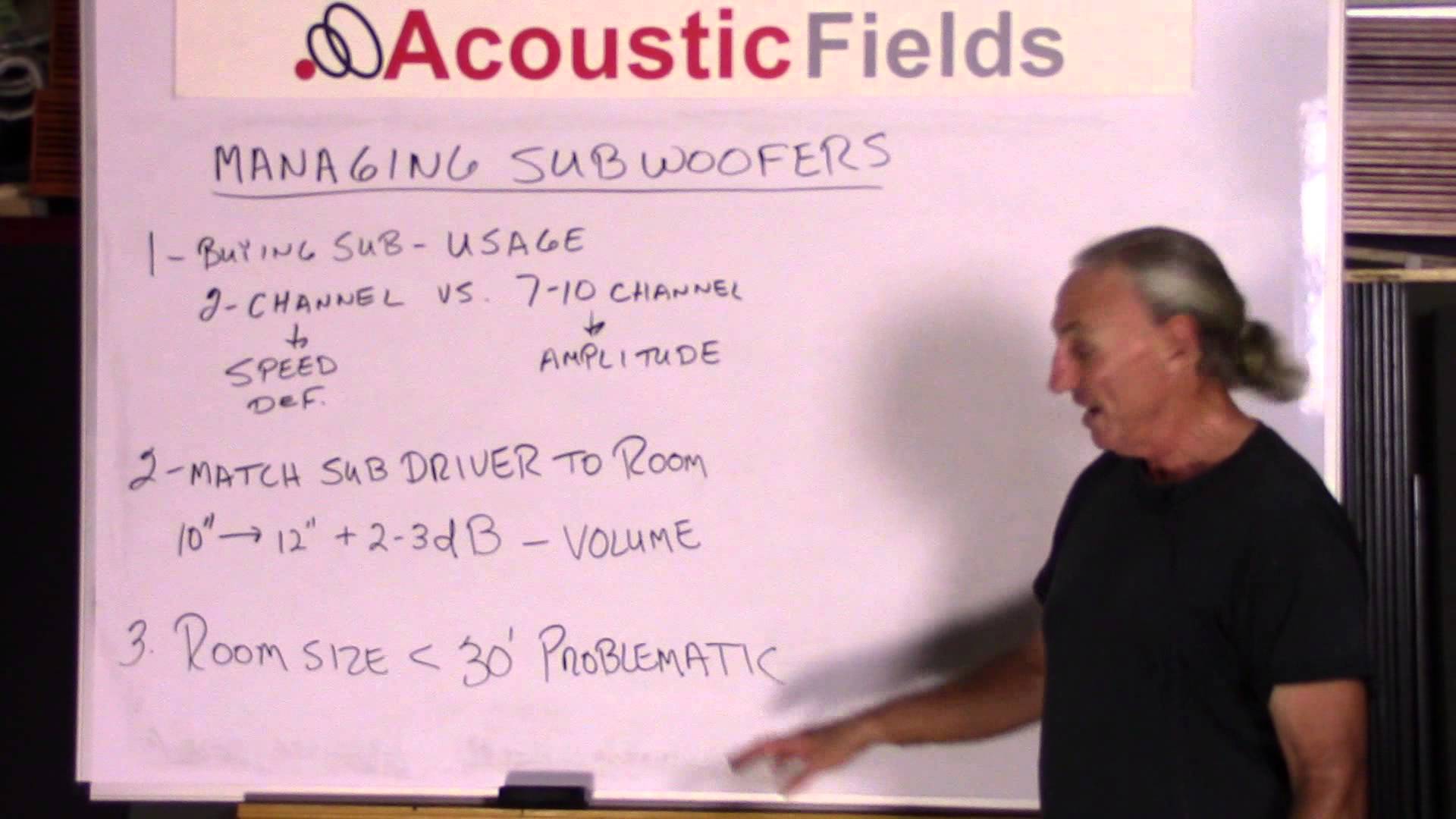
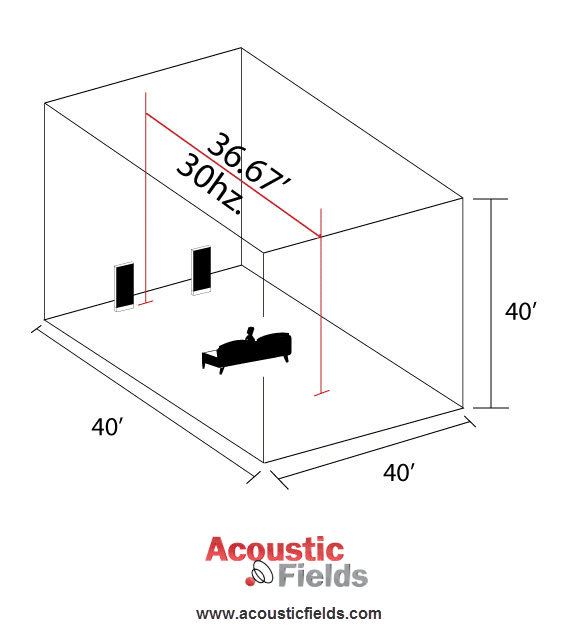
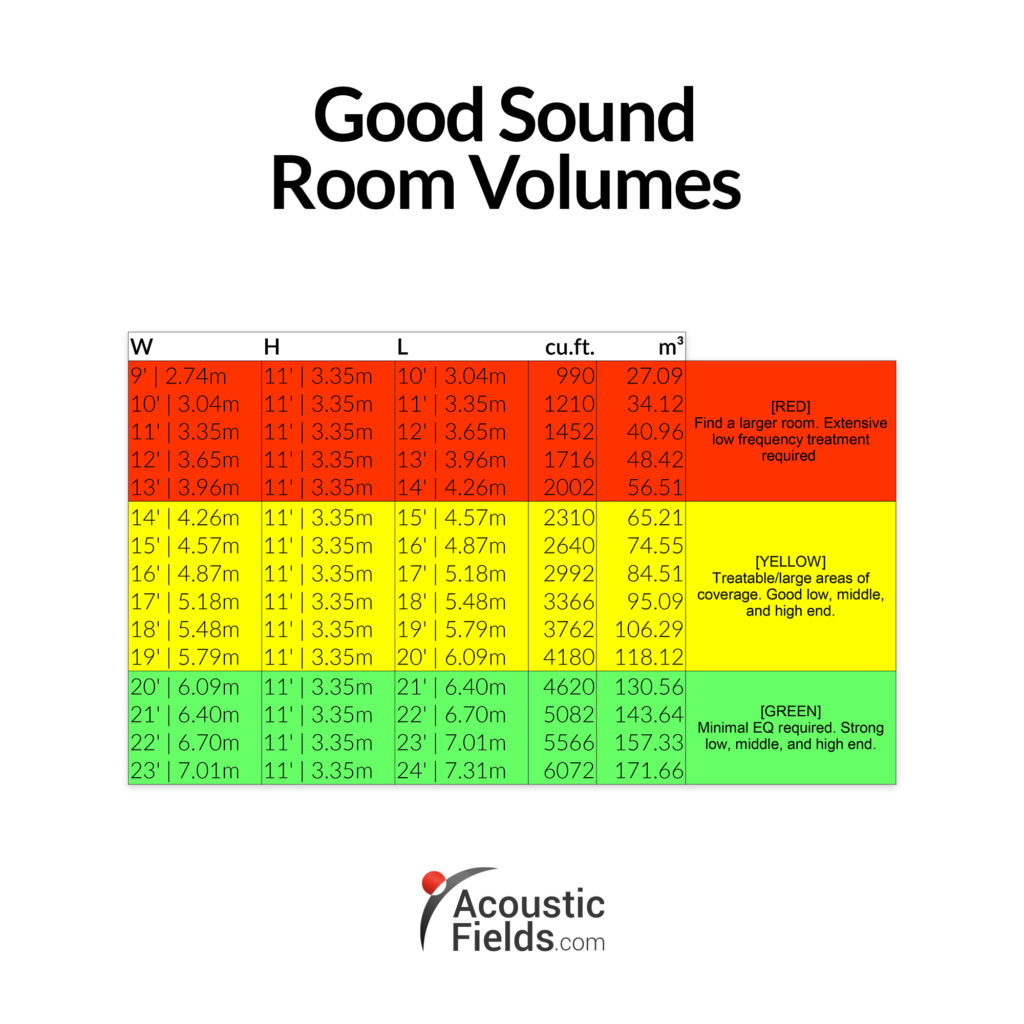



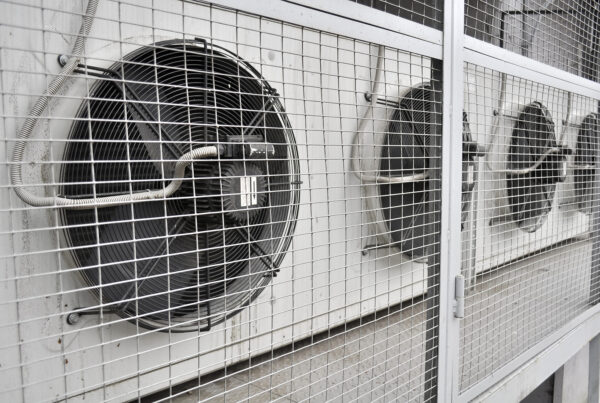

i need to know about the wave of sub woofer, why sound engineer back facing the sub woofer?
Hi Bikash,
Sound radiates from all surfaces of the cabinet. You must absorb energy as close to the source as you can.
What a great article share. A great contribution especially for someone looking forward to buying a car subwoofer, amplifier and enclosure. If anybody wants to install a new one, this is the most effective share, that will be very helpful for best choice. Thanks a lot for the post.
Thank you very much for posting. This the best guide post for car audio sound systems include details. It is a very effective and helpful share for beginners. Author keeps all thoughts at this share.
What a great article to share. A great contribution especially for someone looking forward to buying a car subwoofer, amplifier and enclosure. If anybody wants to install a new one, this is the most effective share, that will be very helpful for the best choice. Thanks a lot for the post.
Thanks a lot for sharing your incredible ideas. It is an appreciated and pretty tip for all those music lovers. What a Fatal post for those who want to upgrade an existing subwoofer with a new one.
Thank you so much for these tips, Just a bit of moving around on my rather old subwoofer 2 speaker setup made it sound so much better its amazing!
You are welcome.
Wonderful post, thank you! I’ve replaced my subwoofers a week ago. These tips are really very helpful for beginners.
This is really to good idea and to good information thanks sharing this wonderful article and help us